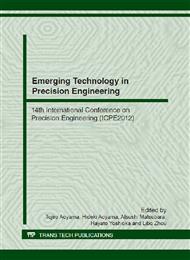p.645
p.650
p.656
p.662
p.668
p.674
p.680
p.686
p.693
Self-Assembly of Fine Particles on Optical Element for Sensitivity Improvement of Biochemical Sensor
Abstract:
This paper introduces a sensitivity improvement of biochemical sensor by a combination of self-assembly of particles and optical lens. Typical biochemical sensor utilizes fluorescence emitted as a result of specific reaction. The sensitivity can be enhanced with the increase in surface area of self-assembled fine particles. In addition, optical lens was used to convergent the fluorescent light to simplify the system configuration. Silica particles of 1m diameter were assembled on a convex lens and modified with protein labeled with fluorescent material. Then, the spatial distribution of fluorescence was measured by changing the angle from the optical axis and distance from the lens. The results show sensitivity improvement up to 600 %. However, it was found that the effect of scattering should be taken into account for further sensitivity improvement.
Info:
Periodical:
Pages:
668-673
Citation:
Online since:
November 2012
Authors:
Keywords:
Price:
Сopyright:
© 2012 Trans Tech Publications Ltd. All Rights Reserved
Share:
Citation:


